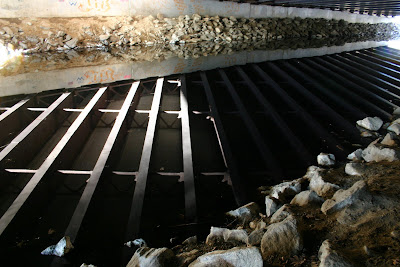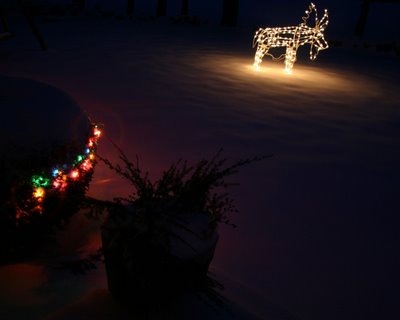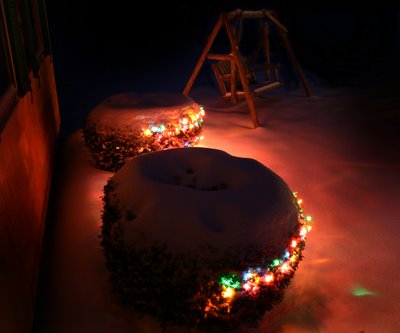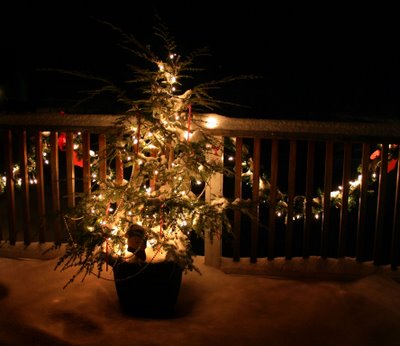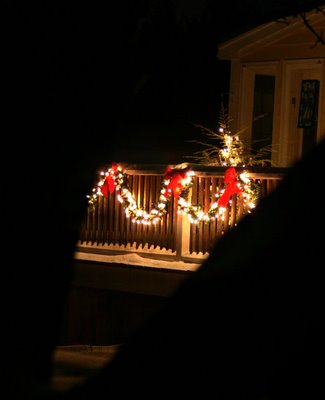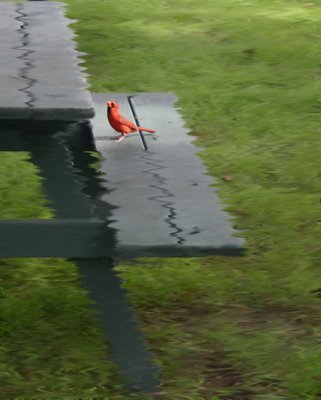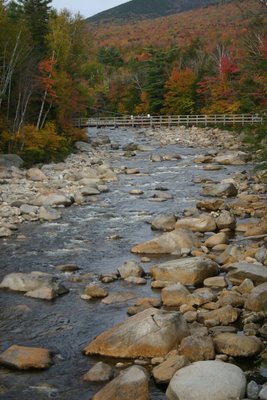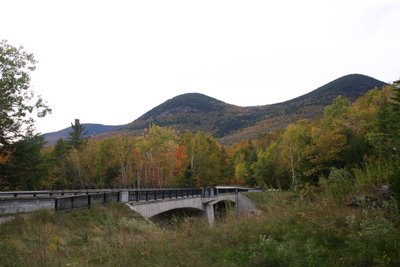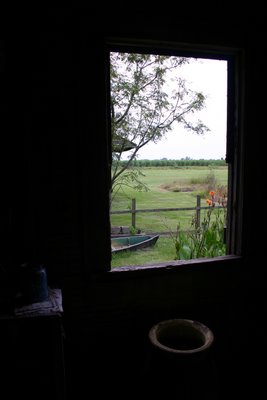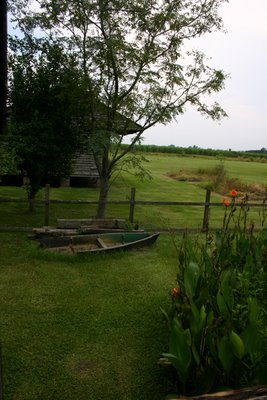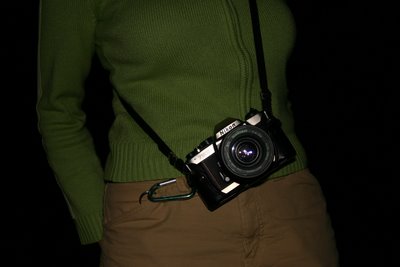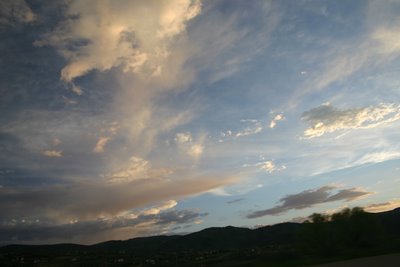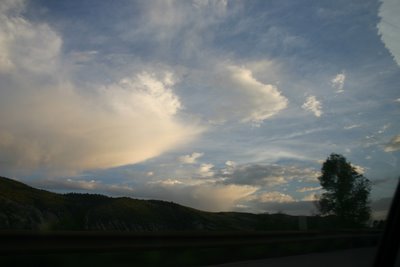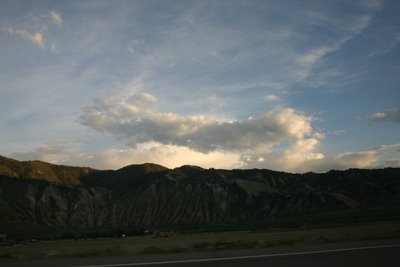Sunday, September 23, 2007
Monday, July 23, 2007
Friday, July 13, 2007
Thursday, July 12, 2007
Sunday, July 08, 2007
Sunday, April 15, 2007
Twenty-six:

You never know where you will find a good photo! I smudged the background with Adobe Photoshop elements. It's a good little program; complicaited enough that you have quite a few options to alter your photo, but not too many that it's overwhelming. I have actually had a professional photographer tell me that Photoshop elements is a better deal than the actual Photoshop program, unless you are going into the business of taking and seriously altering photos.
Thursday, April 12, 2007
Friday, March 09, 2007
Tuesday, March 06, 2007
Thursday, February 15, 2007
Wednesday, February 14, 2007
Tuesday, December 26, 2006
Thursday, December 21, 2006
Wednesday, December 06, 2006
Saturday, December 02, 2006
Seventeen:
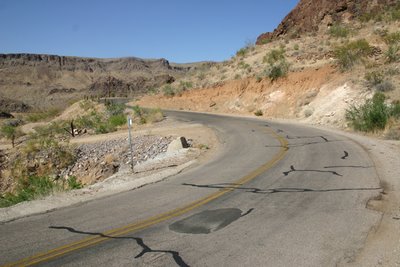
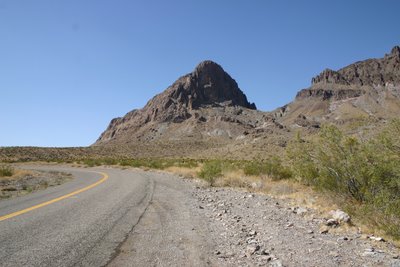
This brief trip along historic route 66 was incredible. This portion stretched between Topock, AZ and Kingman, AZ, passing through Oatman which was an interesting little town that almost seemed to come out of the old west. The road just winds and goes through amazing scenery. If anyone has to drive that stretch of road at night, take your time, the roads are narrow and twistier than most roads modern drivers are used to. But it is well worth the trip.
Thursday, November 30, 2006
Monday, November 27, 2006
Thursday, November 09, 2006
Fourteen:
The Whaley House in San Diego's Old Town, was not only a theater, meeting house, and general store, it was home to the Whaley family during the 1800s. Prior to the house being built, the land was used for hanging. There are reputed to be many ghosts haunting the building, including those of some of the Whaley's. The house is also a museum which displays many artifacts from the pre-20th century era. It is an impressive collection and the people who lead the tours and maintain the museum are incredibly knowledgeable about the building's history and they are very much involved with the work. It is not just a job, it is a hobby.
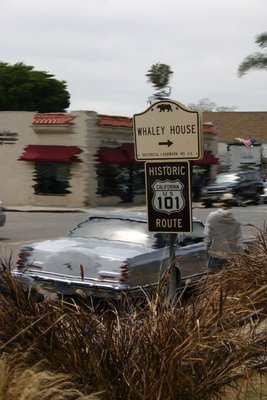
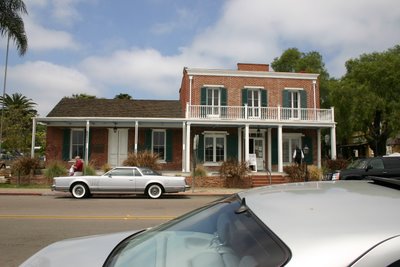
These stairs are around the back of the house. I just found the photo to be aesthetic.
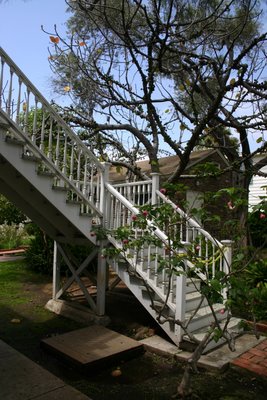


These stairs are around the back of the house. I just found the photo to be aesthetic.

Wednesday, November 08, 2006
Sunday, November 05, 2006
Sunday, October 29, 2006
Eleven:
For Halloween I am doing the stereotypical thing and posting photographs of cemeteries. However, I have always loved cemeteries and it is a personal belief that photographs taken in such places should be black and white. To me, it reflects the nature of a cemetery, a somber respect for those who have gone before, and those who mourn them. This first photo clues you in to where these photos were taken. This photo is not in black and white because I like the color of the plaque, and I figured I escaped my personal morals because it is not of the actual interior of the cemetery.
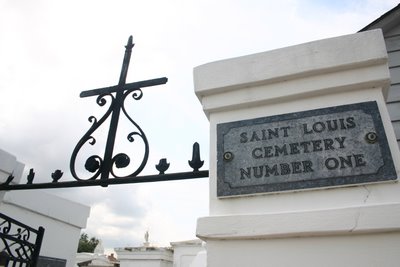
This is one of the most photographed markers in the New Orleans area cemeteries. It was apparently erected by the family of a little girl and it does reflect the sadness of the family that she was unable to live.

This is something that I find interesting. These are public tombs, you were buried here if you could not afford to pay for a private tomb. Also, if you did buy a private, or family, tomb, you could pay the church (Catholic) a certain amount and have a 'perpetual care' plaque placed on it. What that meant was that the church would always maintain the tomb, even if your family members did not. If ever there was a doubt in your head about the city of New Orleans sinking, this photograph should erase such thoughts. The bottom row is over half-way covered by the ground and it is sinking crookedly, also, there is no telling if there is another row of tombs under the third row. Over a hundred years and look how far it has sunk. It brings into sharp reality why the New Orleanians have to bury their dead above ground.
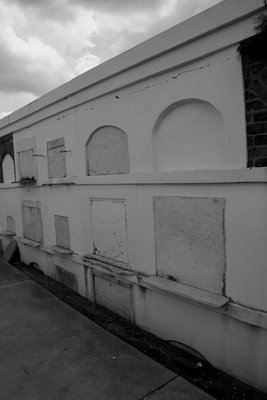

This is one of the most photographed markers in the New Orleans area cemeteries. It was apparently erected by the family of a little girl and it does reflect the sadness of the family that she was unable to live.

This is something that I find interesting. These are public tombs, you were buried here if you could not afford to pay for a private tomb. Also, if you did buy a private, or family, tomb, you could pay the church (Catholic) a certain amount and have a 'perpetual care' plaque placed on it. What that meant was that the church would always maintain the tomb, even if your family members did not. If ever there was a doubt in your head about the city of New Orleans sinking, this photograph should erase such thoughts. The bottom row is over half-way covered by the ground and it is sinking crookedly, also, there is no telling if there is another row of tombs under the third row. Over a hundred years and look how far it has sunk. It brings into sharp reality why the New Orleanians have to bury their dead above ground.

Monday, October 23, 2006
Ten:

In Keene, New Hampshire, there is a Pumpkin Festival of epic proportions held. For a town of under 25,000, in 2003 it set a Guiniuss Book of World Record of having over 28,000 jack-o-lanterns in one place. That many people come to the festival. However, the town lost it's title to Boston, Massachusetts this year with just over 30,000 jack-o-lanterns. It took a city of over 500,000 people about three years to overcome Keene's record. However, the Keene Pumpkin Festival, started in 1991 as a Harvest Festival, created the section for 'most lit jack-o-lanterns in one place' in the record books. Boston may take away the title, but that title only exists because of a little town to the Northwest of Boston. I find that amazing.
Friday, October 06, 2006
Nine:
These are some of the plantations of Louisiana. I do not post them as a statement, or in disrespect of anyone or their ancestors. I post these photographs as an example of amazing and beautiful architecture, that has lasted generations, and may last for many more. These houses are open for tours, however, many do not allow photographs inside the houses. The only exception out of these that are shown is Nottoway, which is a bed and breakfast, and Laura, which was gutted by a fire before hurricane Katrina. I strongly recommend that anyone who sees these photos, and enjoys them, go to the plantations respective websites and look into visiting them. The entire New Orleans, Baton Rouge area is not completely devestated in the physical sense. They are, however, hurting in the economic sense because tourists are in short supply. There are beautiful places down there and contrary to popular northern beliefs, the Civil War is not still going on.
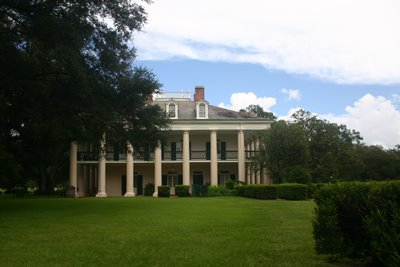
Oak Alley: This plantation is one of the most famous for it's alley of oak trees leading from the Mississippi river, to the front door of the house. While the house is not as grand as some other plantations, it is one of my absolute favorites for it's simple charm. The grounds reflect the simplicity of the building and it exudes an air of grace and charm that is in the breath of the place.
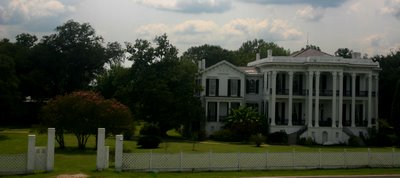
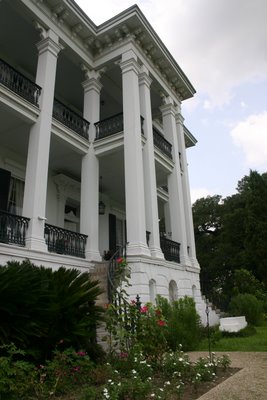
Nottoway: This is an amazing place. The building takes your breath away when you stand in front of it. This house has 53,000 square feet of actual home. It was built all at once and it is now a bed and breakfast. One of the interesting things about it, is they have turned the ruins of a fairly large kitchen (kitchens were not attached to the house for fear of fire back then) into a pool. There is a book, written by one of the daughters of the original owners under an assumed name, called "The White Castle of Louisiana" in which the daughter recalls her life on the plantation as a girl.
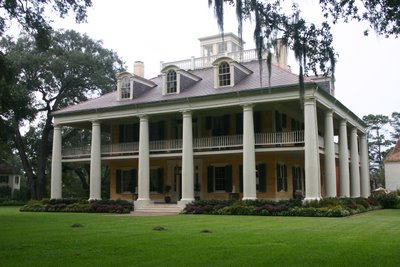
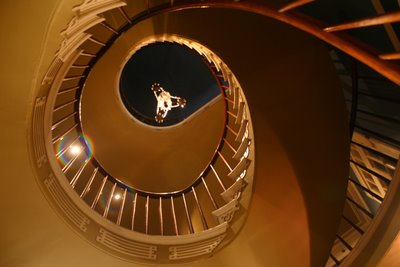
Houmas House: It has been called the "Sugar Palace" because it was a sugar plantation and appears to be a palace among the plantations of Louisiana. I consider this the most opulent of the houses I post here. The walls were painted in rich colors and it was beautiful, however, it felt cluttered, claustrophobic, there were too many antiques stuffed into the building. There is one room that guests are allowed to take photos of and that is the grand staircase shown above. The exterior and the gardens are what you REALLY want to see. For me, after seeing the outside, touring the interior was a bit of a let down because there is so much in the rooms. It does have one interesting thing in the collection that I had never seen; a vampire hunter's kit, complete with wooden stakes, crosses, and everything else a vampire hunter would need.
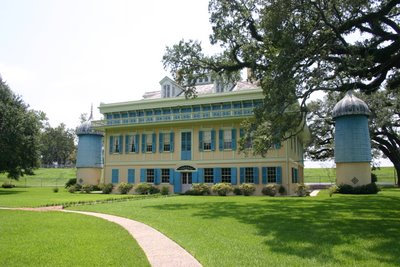

San Francisco: The name is not indicative of the California city. This plantation is one of the more unique mansions along the Mississippi in Louisiana and it is said that it looks like a riverboat. The two cisterns on either side of the house collect water and provide the house with a crude plumbing system, something very rare during the antebellum period. The back of the house was never finished because the builder died before the back gallery could be built, which is why on the second floor, there is a set of double doors which lead to nowhere. The reason why these are abstract photos is because when the levy and roadway was built in front of it in the 1930s, the engineers had to confiscate most of the front lawn, therefore, only about 60ft (a personal estimate) of front yard remains before road, then levy, then river. What is so sad is that the property is surrounded by an 8ft chain link fence with coiled barbed wire at the top. The fact that an Oil company owns it, may have something to do with the heightened level of security, but it is still heartbreaking to be unable to take a photograph of the outside without having the chainlink fence in the way.
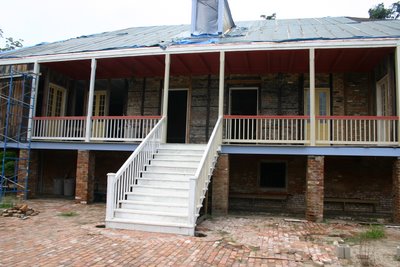
Laura: This is a Creole plantation. The Creole people ran their plantations as what they were; businesses. The family which established this plantation (which is actually named after the last 'president' of the 'business') lived in New Orleans. These families did not pass the business to the oldest male, it was passed to the smartest of the next generation, and the plantation was run, primarily, by some particularly cagey women. Unfortunately, as memory serves, in 2004 this building was gutted by a fire caused by electrical spark. A majority of the artifacts were saved, but some precious ones were lost. This is a photo of the back of the house. The brickwork on the ground is amazing, especially around the stairs leading up to the house. Restoration is progressing slowly because workers in the New Orleans and Baton Rouge area are in short supply.

Oak Alley: This plantation is one of the most famous for it's alley of oak trees leading from the Mississippi river, to the front door of the house. While the house is not as grand as some other plantations, it is one of my absolute favorites for it's simple charm. The grounds reflect the simplicity of the building and it exudes an air of grace and charm that is in the breath of the place.


Nottoway: This is an amazing place. The building takes your breath away when you stand in front of it. This house has 53,000 square feet of actual home. It was built all at once and it is now a bed and breakfast. One of the interesting things about it, is they have turned the ruins of a fairly large kitchen (kitchens were not attached to the house for fear of fire back then) into a pool. There is a book, written by one of the daughters of the original owners under an assumed name, called "The White Castle of Louisiana" in which the daughter recalls her life on the plantation as a girl.


Houmas House: It has been called the "Sugar Palace" because it was a sugar plantation and appears to be a palace among the plantations of Louisiana. I consider this the most opulent of the houses I post here. The walls were painted in rich colors and it was beautiful, however, it felt cluttered, claustrophobic, there were too many antiques stuffed into the building. There is one room that guests are allowed to take photos of and that is the grand staircase shown above. The exterior and the gardens are what you REALLY want to see. For me, after seeing the outside, touring the interior was a bit of a let down because there is so much in the rooms. It does have one interesting thing in the collection that I had never seen; a vampire hunter's kit, complete with wooden stakes, crosses, and everything else a vampire hunter would need.


San Francisco: The name is not indicative of the California city. This plantation is one of the more unique mansions along the Mississippi in Louisiana and it is said that it looks like a riverboat. The two cisterns on either side of the house collect water and provide the house with a crude plumbing system, something very rare during the antebellum period. The back of the house was never finished because the builder died before the back gallery could be built, which is why on the second floor, there is a set of double doors which lead to nowhere. The reason why these are abstract photos is because when the levy and roadway was built in front of it in the 1930s, the engineers had to confiscate most of the front lawn, therefore, only about 60ft (a personal estimate) of front yard remains before road, then levy, then river. What is so sad is that the property is surrounded by an 8ft chain link fence with coiled barbed wire at the top. The fact that an Oil company owns it, may have something to do with the heightened level of security, but it is still heartbreaking to be unable to take a photograph of the outside without having the chainlink fence in the way.

Laura: This is a Creole plantation. The Creole people ran their plantations as what they were; businesses. The family which established this plantation (which is actually named after the last 'president' of the 'business') lived in New Orleans. These families did not pass the business to the oldest male, it was passed to the smartest of the next generation, and the plantation was run, primarily, by some particularly cagey women. Unfortunately, as memory serves, in 2004 this building was gutted by a fire caused by electrical spark. A majority of the artifacts were saved, but some precious ones were lost. This is a photo of the back of the house. The brickwork on the ground is amazing, especially around the stairs leading up to the house. Restoration is progressing slowly because workers in the New Orleans and Baton Rouge area are in short supply.
Monday, September 25, 2006
Eight:

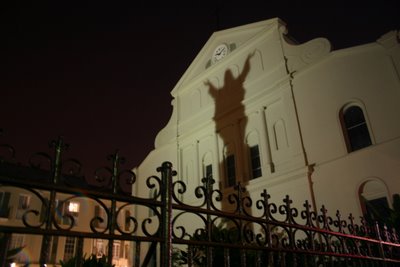
The St. Charles Cathedral in New Orleans, Louisiana. The Virgin Mary casts her shadow on the back of the building. The Cathedral faces Jackson square where, local legend provides, the statue of Jackson is tipping his hat to his mistress who lived in one of the buildings along the square. I will say one thing about the Catholics; they sure know how to build a church...
Seven:

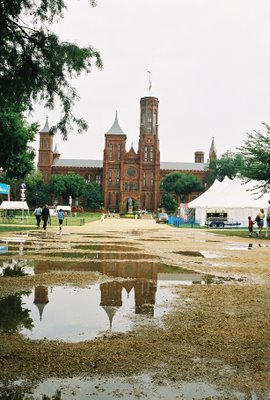
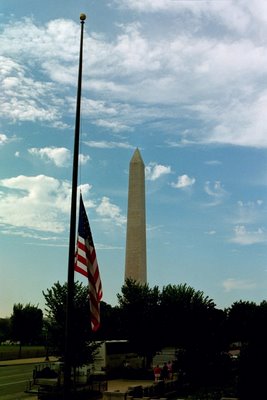

Washington D.C., our nation's capital, proves that even a city that has been affected by modernism can retain it's own beauty and history in spite of the ages. My favorite of these photos is the one of the Capitol building at dusk with the Ulysses S. Grant memorial in the foreground. The natural lighting is just amazing, and I did not even have to hold the camera still for very long.







